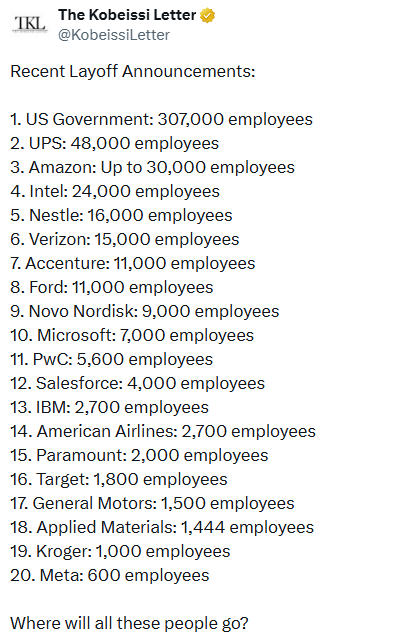Affordable living is the topic of the day. Not only in the world of Mises.org but in everyday life. While inflation has fallen to some degree, it remains high and understated. While many people dislike inflation and know intuitively it is robbing them of their wealth, I would like to point out a few ways in which this is happening more than they realize.
One of the better-known reasons for the understatement of inflation is the definitional changes that take place over time. Price inflation is commonly measured by indices that aggregate the overall price level in an economy. When what is included in the definition changes, the comparability of current prices to past prices is literally comparing apples and oranges. As those of us who are skeptical of state power know, the adjustments tend to be one direction, understating inflation.
One service provider that tracks these sorts of changes is ShadowStats, which is run by John Williams. John and his team track the definition of inflation and maintain metrics that show what the inflation rates would have been had the definition not changed. John and his team think inflation is roughly twice as high in the US than what is reported by the Fed.
The second major reason we don’t understand just how much we are being robbed is due to the complexity of understanding what inflation is in the first place. As most economists of the Austrian school highlight, inflation is simply the increase in the production of monetary units beyond what would be created in the free market. The reason for this definition is that when gold served as money, the supply of gold was increasing over time, but the resources used to mine gold were always subject to market demand for gold alongside every other good in society. If the price of gold went up, a stronger incentive to mine gold resulted which encouraged more investment in the exploration and extraction of gold. If the price of gold decreased, the opposite would happen. Contrariwise, when the Fed can simply print paper, or better yet add zeroes with keystrokes, it does so with no respect for the relative demand in the economy for more or less of a monetary unit.
This increased production of money proliferates throughout the economy at uneven rates where the prices of goods in society increase disproportionately. The first people to realize their money doubled would rush out to spend their perceived increased capital, driving up the price of the specific goods they were buying. This itself is a change in the consumer preferences of the individuals in society, which consequently changes the relative price structure of various goods. As the Austrians say, money is nonneutral.
Inflation impacts individuals and families in different ways at different times. I don’t experience the same inflation as you, and your family doesn’t experience the same inflation rate as your neighbor. You buy different things and are relatively more or less flexible in your desire for certain goods. As a result, any definition of inflation is only an abstraction, not applicable to real people and individual lives. While the consumer price index and other indices can be helpful tools, all they can measure is an aggregate price level. They cannot express how inflation affects our wealth and well-being; they cannot express the full and accurate impact of inflation on any individual.
Finally, a third way in which our inflation rate is understated is through quality adjustment within indices measuring inflation. While officially this problem is adjusted for, we must recognize that sellers of goods are very incented to highlight the improvements in quality and also very incented to brush over quality degradation. In addition, quality adjustments themselves have a natural deflationary effect on prices. As such, even a monetary price that remains unchanged is actually the combination of natural deflation through improved quality and inflation taking place in the economic system in some capacity.
Apart from these objective shortcomings, it is also my personal opinion that these indices constantly overstate the increase in value from having a superior TV or any other technology. I do not doubt that having a new TV in 2023 is better than having the 2010 version. What I dispute is that this is as substantial of an increase in the quality of the product as the indices like to take credit for. There is no market mechanism for determining the relative value increase in TVs over this time, and the people in power are incentivized to bias the numbers against us.
As a final comment on quality adjustments, it is also relatively common for the indices to minimize the changes in consumption patterns that lower quality of life. The common adage of switching steaks for chicken or burgers to make ends meet is an accurate criticism, as is the concept of “shrinkflation,” where tissue manufacturers put 15 percent fewer tissues in the box and the snack chips producers sell you a bag of air with a chip or two. These are very real debasements in the quality of the consumer’s life that result in inflation being understated.
The last point I would like to make about the tragedy of inflation is that it compounds with time. A very small persistent increase in the inflation rate will devalue money extremely fast. For example, with inflation at 2 percent, the price level approximately doubles every thirty-six years. If you increase that to just 3 percent, the price level doubles every twenty-four years—twelve fewer years you have to double your money—all just to keep up with inflation.
The most frustrating thing about the inflation gambit for me, however, is that even a basic understanding of economics would tell you it is not necessary. If we allowed a commodity (such as gold or bitcoin) to be money, inflation in the Austrian definition would be virtually zero and the prices in society would fluctuate only according to the relative supply and demand schedules of the individuals.
All prices cannot simply increase at once, as there are not enough units of money for that increase to occur. If the price of one thing goes up, due to an increase in demand or a decreased supply, relatively more monetary units must be used to purchase that good, which leaves relatively fewer monetary units to be allocated to other goods. This scarcity of money for other purposes must necessarily result in lower prices elsewhere.
Finally, in a healthy and productive society, we would likely see some slight price deflation. Not a decrease in inflation but an actual decrease in the prices in society. The reason for this is that as society gets more productive, we effectively have more goods and services for consumption. We can use the same inputs and create relatively more and better outputs. This leads to the same monetary units being spread over more and better goods and services. As a result, we can buy more and better products and it costs less—price deflation.
Contrary to the state-informed economists that make their living using technocratic arguments on behalf of the state, deflation is not a bad thing at all. Rather, it is a natural state of human affairs that encourages good decision-making by the consumer. Where there is deflation, I can get an increase in purchasing power by simply not spending my money. This means that when one goes to buy something, they must make the tradeoff between having some goods now and having more goods and services later—a natural tradeoff to make.
On the other hand, under inflation, we are incentivized to spend money on literally anything as it will necessarily be more expensive in the future. In this case, the value of money depreciates, which means you can choose between some goods now and fewer goods and services in the future.
Full story here Are you the author? Previous post See more for Next postTags: Featured,newsletter
































